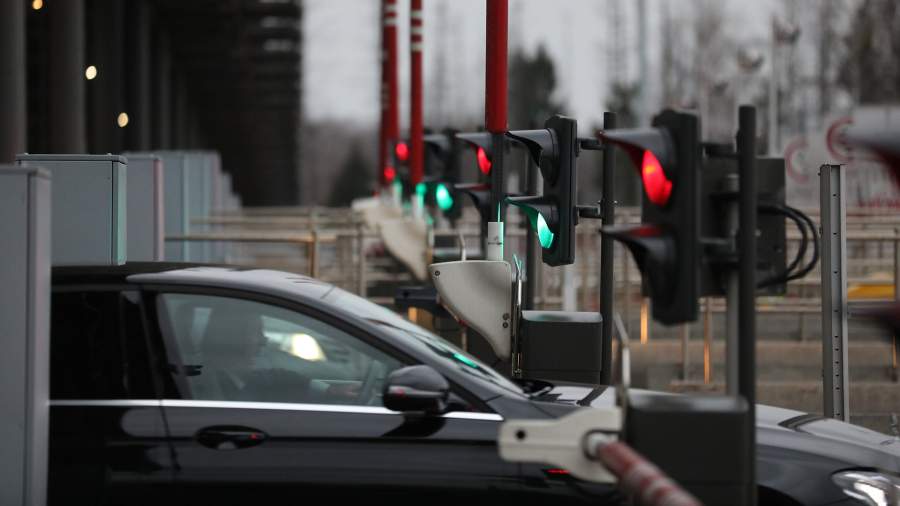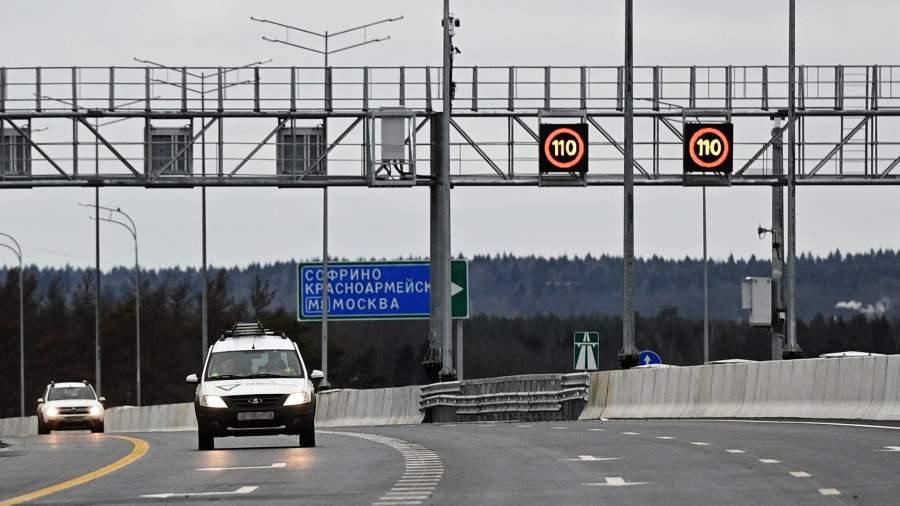A new section of the Central Ring Road was launched in the Moscow Region, and with it an innovative toll collection system. A single technical platform will now unite the entire network of toll highways in the country and all operators. Another innovation of the Central Ring Road is the absence of barriers. Izvestia figured out whether they would be removed from other routes.
Table Of Contents
One for all
The first toll and longest section of the road, which connects M-11 “Neva” and M-7 “Volga” – TsKAD-3, was launched in the Moscow region. Its length is almost 106 km, and the maximum permitted speed is 110 km / h. Together with TsKAD-3, a unified technological platform for collecting money on all toll roads in Russia was launched.
“It unites the entire network of toll highways of the country in a single control center, which now collects data on each transaction, each use of toll roads,” said Marsel Nigmetzyanov, General Director of Kazan-Telematics, a subsidiary of the National Telematic Systems concern … Kazan-Telematics is the developer of the new system. The single control center itself is located at the new Central Ring Road-3 and is capable of processing up to 1 million transactions per day.
The main advantage of a single system is that it works with all toll road operators.
“This is very convenient, not all countries have it. For example, the forums often write how our tourists with American paysites have suffered. Because the roads belong to different companies and work with different systems, ”the Kazan-Telematics press service explained to Izvestia.
Individual tariff
Thanks to the innovation, in the future it will be possible to launch more complex and combined tariffs and services for toll road users. For example, individual ones, which will take into account the frequency of trips, time of day and other parameters.
However, the chief editor of Radio Avtodor, Igor Morzharetto, said that such tariffs are unlikely to appear in the near future. It will take time to launch them.
The editor-in-chief of Radio Avtodor, Anton Chuikin, told Izvestia that four transponders are in operation today, but the conditions for travel along the Central Ring Road are different for them.
“Standard scheme with standard 15% discount for transponders. On the Central Ring Road it is valid regardless of whose transponder is used for payment. However, for “native” Avtodorovskaya T-pass transponders, there is a so-called cascade discount: if you drive through the entire section, then it will be 50%, exactly the same 255 rubles to be paid. For everyone else, it will be 500 rubles minus 15%“, – said Chuikin.
“In addition to the discount on the transponder, it will be possible to enter some bonus programs that depend on the number of passes,” added Igor Morzharetto.
“Hares” will replenish the budget
Fines for unpaid travel are planned to be sent to the Federal Road Fund. And in full. At the same time, as noted by the State Duma Committee on Budget and Taxes, the situation with private toll roads and roads built within the framework of public-private partnerships remains unresolved. Moreover, fines for unpaid travel will become a serious source of income.
“The Federal Road Fund may be replenished in 2020-2021 by 1.8 billion rubles due to fines for non-payment of travel on toll roads– the Deputy Minister of Transport Dmitry Zverev gave a forecast during the discussion of the bill in the State Duma. “In the coming years, receipts will decrease to 800–850 million rubles a year.”
To give the innovation the green light, special amendments have been developed that provide for administrative responsibility for traveling “like a hare” on any toll road in the Russian Federation. In October 2020, the bill was adopted in the first reading and is under further consideration by the State Duma.
“Despite the fact that the law has not yet entered into force, it will not be possible to ride like a hare through the Central Ring Road – the driver will still get an invoice, which sooner or later will have to be paid,” stressed Igor Morzharetto.
The fine for non-payment of travel on the Central Ring Road will be 2,500 rubles for cars and 5,500 rubles for trucks. In this case, the driver can pay for the fare within two months after the official notification of the violation.
Freedom from barriers
Interestingly, the system for collecting fees at the Central Ring Road has been solved, this is the first highway in Russia with a free flow system, checkpoint bases and barriers that collect traffic jams. The fare is paid automatically when a car with a transponder passes under the frame.
“A set of equipment is installed on each of the frames, which collects information from passing vehicles. These are cameras that record the fact of a car’s passage and read state registration numbers; laser sensors that determine the dimensions of the car; antennas that recognize transponders; and an industrial computer. It will be he who will be responsible for the primary processing of information and for its transmission to the central system of the Free Stream, – said the press service of the Avtodor company. They noted that the accuracy of these cameras is more than 97%, even in poor visibility conditions.
It will not work to hide the number by covering it with mud – the equipment has been tested in various temperature conditions, in various speed modes.
“If it is snowing, raining, muddy on the street, or we cannot recognize the registration plate, then we have pre-parsing groups that will parse the undefined number in semi-automatic mode.“, – said Igor Kozubenko, Deputy Chairman of the Board of Avtodor.
Five days are given to pay for the fare, then the car owner is notified of the violation and is given the opportunity to pay for the fare within 60 days without a fine. After that, you will have to pay both the fine and travel.
According to Igor Morzharetto, there will be much more roads of the new type with the free flow system in the near future, but the old ones with barriers are unlikely to be remodeled.
The roads will grow wiser
In addition to paying for tolls, the possibility of switching to a single system and all other toll road management functions is being worked out: video monitoring, weather monitoring, incident response, intelligent flow management
We are talking about the “Smart Road” system, also developed by the “Kazan-Telematics” company and already used at the Central Ring Road. It will warn drivers to maneuver, slow down, change lanes and much more.
“The speed of response is increased significantly compared to such online services, where information about incidents appears on the basis of messages from road users. As a result, the driver can react faster to dangerous situations, potentially saving thousands of lives. In the future, on the basis of such a road system, it will be possible to provide additional services – searching for gas stations, parking lots, car washes, car maintenance, entertainment content, ”Marsel Nigmetzyanov told Izvestia.
The system has more than 76 CCTV cameras, more than 70 transport sensors and more than 67 V2X sensors
“These sensors allow connected vehicles to both transmit information about their movement and receive information completely from all automated traffic management systems, namely about traffic in traffic flows, about incidents and accidents in order to respond quickly, as well as from meteorological monitoring systems“, – said Igor Kolmagorov, head of the development department of operator activities of the state-owned company Avtodor.
The Smart Road works well with drones and can communicate with them using a modern secure protocol. Thus, part of the functions for orientation and traffic monitoring are taken over by the intelligent transport system.
However, this is a very distant prospect. According to the Boston Consulting Group, by 2035, about 10% of road transport will be unmanned, and according to the McKinsey Global Institute, the total share of unmanned vehicles (fully and semi-autonomous) will reach 15-20% by 2025.




